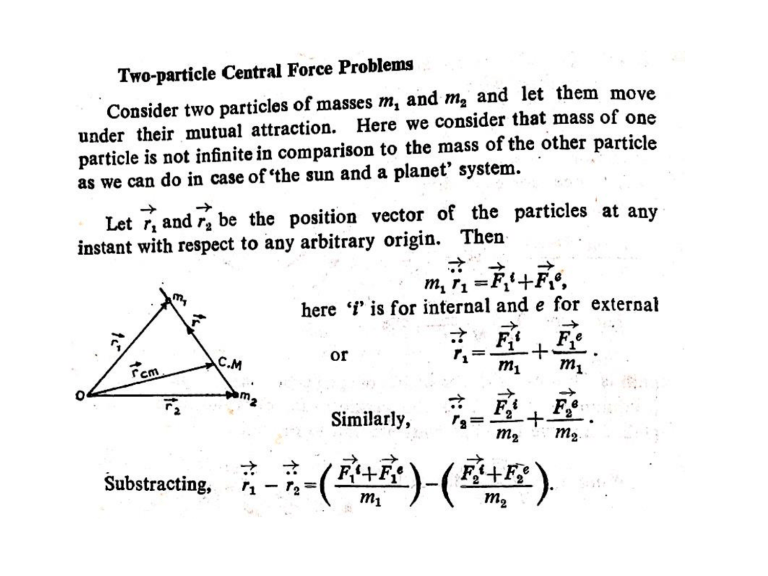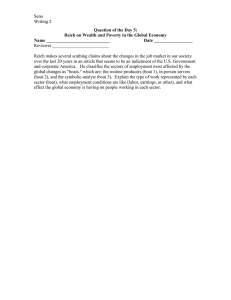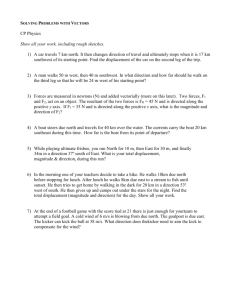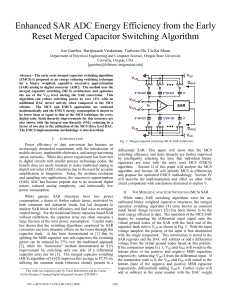
r1 r2 r .........(1) m1 m2 m1 m2 m1 r1 m2 r2 0 ...(2) ....(3) m1 r1 m2 r2 m1 r1 m2 (r1 r) (m1 m2 ) r1 m2 r m2 r r .....(4) r1 (m1 m2 ) m1 m1 r1 m2 r2 m2 r2 m1(r2 r) r2 m1 r r .....(5) (m1 m2 ) m2 A bost of mass M and length L is floating stationary on the still water in a lake. A man of mass m, initially standing at one end of the boat, walks to other end of it and stop; consequently, boat moves on the water. Find the final displacement of boat (from shore) after it stops considering there is no resistance offered by water to the boat. As there is no external force in the direction of displacement, centre of mass of the system remains constant. dPSys d pi dPCM FExt dt dt dt dPCM FExt 0 0 PCM MVCM Const dt VCM Const VCM C VCM 0 Centre of mass remain stationary X CM L L M ( x) m x M mL 2 2 M m M m L L M ( x) m x M mL 2 2 M m M m mL (M m) x x m L M m



